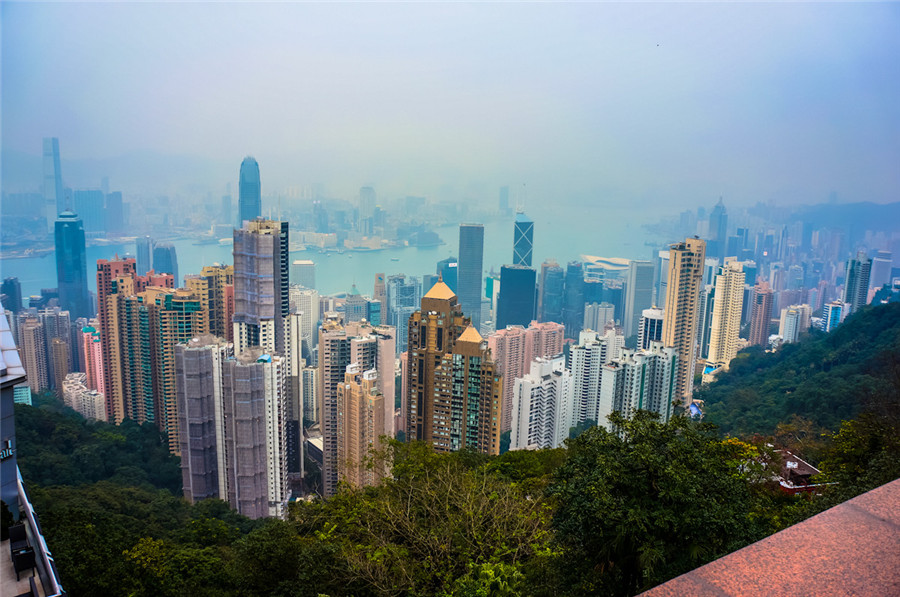HK sees 55% dip in holiday tourists

Violence, shutdown of transportation systems deals severe blow to hotels
Tourism suffered a major setback in Hong Kong, with the number of tourists dropping more than 50 percent during the National Day holidays compared with the same period last year.
From Oct. 1 to 7, tourist arrivals from the Chinese mainland reached 671,952, a 55.8 percent dip compared with the same period last year, according to Hong Kong’s Immigration Department.
The total passenger arrivals during the holiday were about 2.34 million, 31.9 percent less than that of last year.
The National Day holidays, also known as the Golden Week, is a peak season for the city’s major business sectors, such as tourism, retail, catering and hotels. However, this year, the ongoing violence and vandalism, which caused a shutdown of the city’s business and transportation system, have severely dented the tourist sentiment.
On the National Day, a mere 93,097 passengers arrived from the mainland, a 62.5 percent drop compared with last year. The violent protests also crushed out the city’s annual fireworks display on Oct. 1.
According to the Travel Industry Council of Hong Kong, tour groups from the mainland fell to less than 20 per day during the Golden Week, while the last year’s Golden Week witnessed about 100 to 200 a day.
Lam Chi-ting, general secretary of the Federation of Hong Kong Trade Unions in Tourism, said that some travel agencies received “zero tour group order” during the holidays.
In September, tourists to Hong Kong declined over 30 percent compared with the same period last year, said Secretary for Commerce and Economic Development Edward Yau Tang-wah. He said Hong Kong’s economy is floundering and the tourism industry is showing obvious signs of low ebb.
In the first two weeks of September, the number of tour groups from the mainland dropped 90 percent with about 15 tour groups per day on average, and the gloomy trend will continue in October, according to the council.
Tour guide Wan has been struggling to make ends meet these days. He used to take a dozen tour groups in a single month but hardly any currently due to a sharp fall of tourists since the unrest rocked the city in June.
Wan’s situation is a microcosm of Hong Kong’s tourism industry, which has suffered a big blow in the last three months.
The gloom began in July, which should have been the beginning of the peak tourism season.
Visitor arrivals recorded a decline since July, when the number of visitors dropped 1.5 percent year-on-year in the first week and plummeted a further 26 percent by the end of July, said Yau.
He said the situation was getting worse. The tourist arrivals from August 15 to 20 witnessed a 49.6 percent fall compared with the same period last year.
Financial Secretary Paul Chan Mo-po said the tourist numbers dropped almost 40 percent in August from a year earlier, the worst drop since the 2003 SARS epidemic.
Hong Kong International Airport, the world’s third busiest hub for international passenger traffic and the world’s largest air cargo aviation hub, reported a double-digit decline in both passenger and cargo traffic in August.
The protest rallies forced a temporary shutdown of the airport, causing the cancellation of over 200 flights in a single day. More than 20 countries and regions, including Japan, South Korea, Australia and the US, issued travel advisories for Hong Kong.
To reduce pressure on the city’s tourism industry, the Hong Kong Special Administrative Region’s government and the Guangdong government came out with several measures.
Following the new policy announcement by Guangdong government, the first batch of Hong Kong tour guides stepped out into the tourism market of Hengqin New Area of Zhuhai, South China’s Guangdong province, during the National Day holidays.
The new policy helped in providing timely support to the Hong Kong tour guides by encouraging them to explore a new market.
Tourism practitioners were granted a reward of 3,000 yuan, besides a special certificate upon completion of a three-day training on local regulations and Hengqin’s major tourist sites.
Ahead of the winter season, the SAR government announced on its website its stimulus measures, which include waiver of license fees for tour agencies for a year, allocation of funds to the Travel Industry Council to pay the tour guides’ license renewal fee, and a rent cut for food trucks.
The council said it has been helping travel agencies in seeking a rent cut, and a small number of agencies have availed of the benefit. It also urged the government to provide them with support.
The Hong Kong Tourism Board has offered several incentives to support the industry and cut costs for tourism practitioners. It is devising a strategy to promote Hong Kong globally and bring tourists back to the SAR.
However, before tourist confidence in Hong Kong can be restored, the violence must end, the tourism board said.
Source: China Daily Update: October 11, 2019











